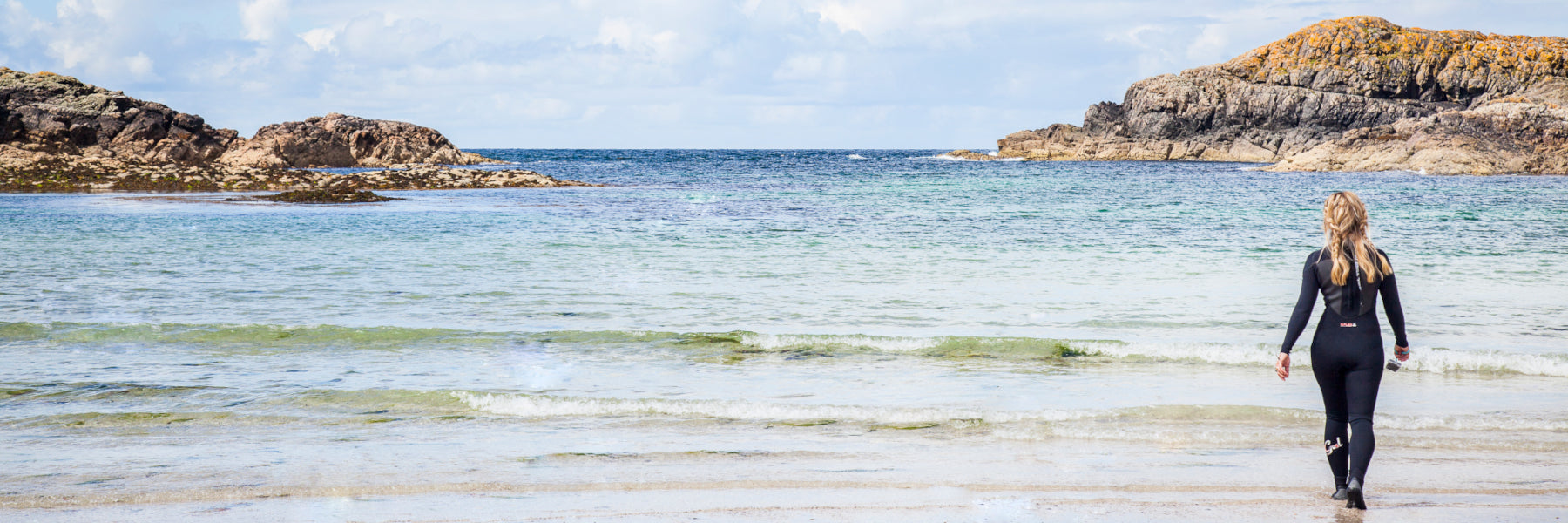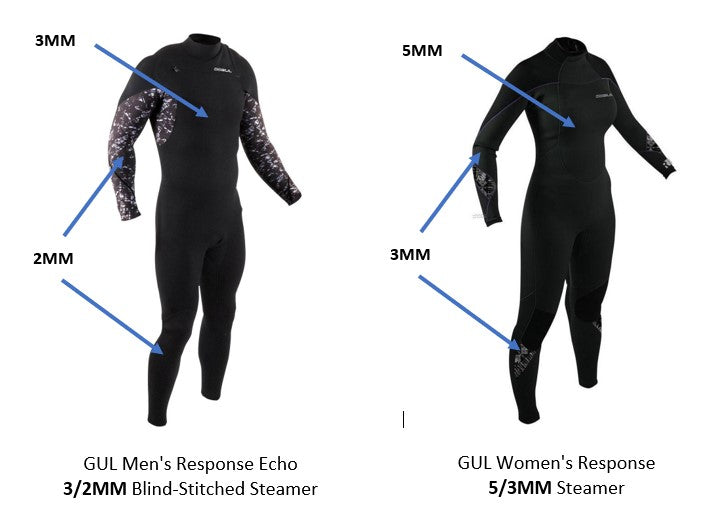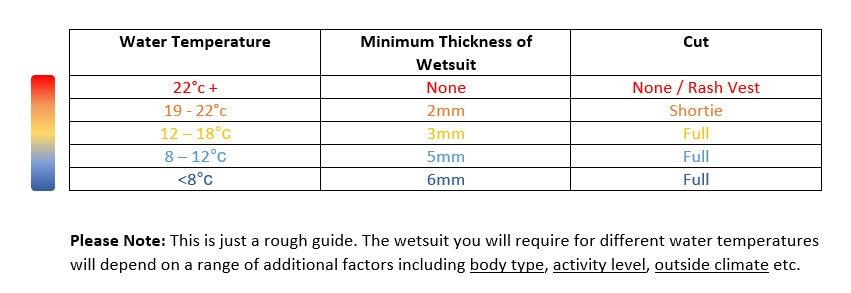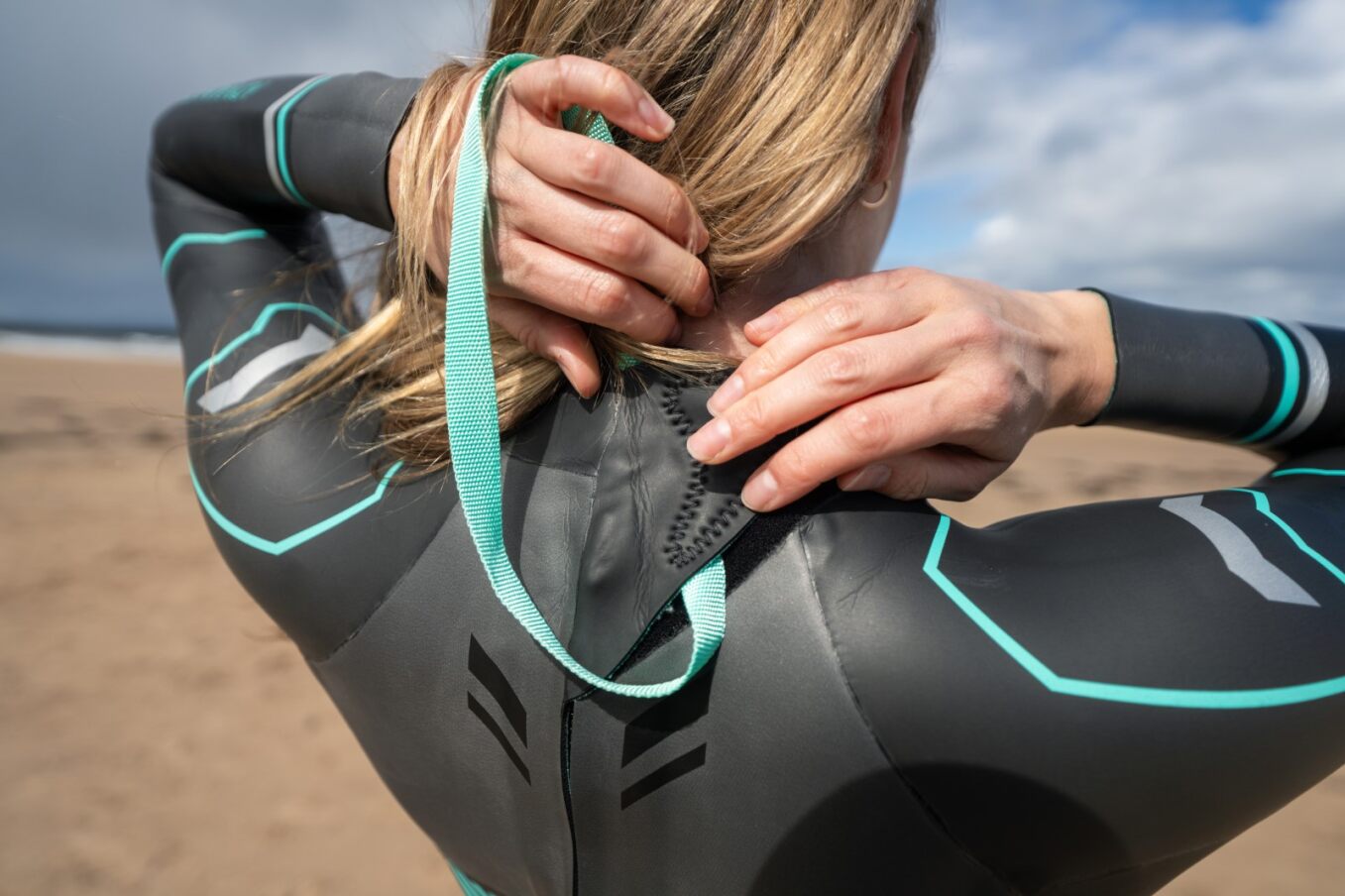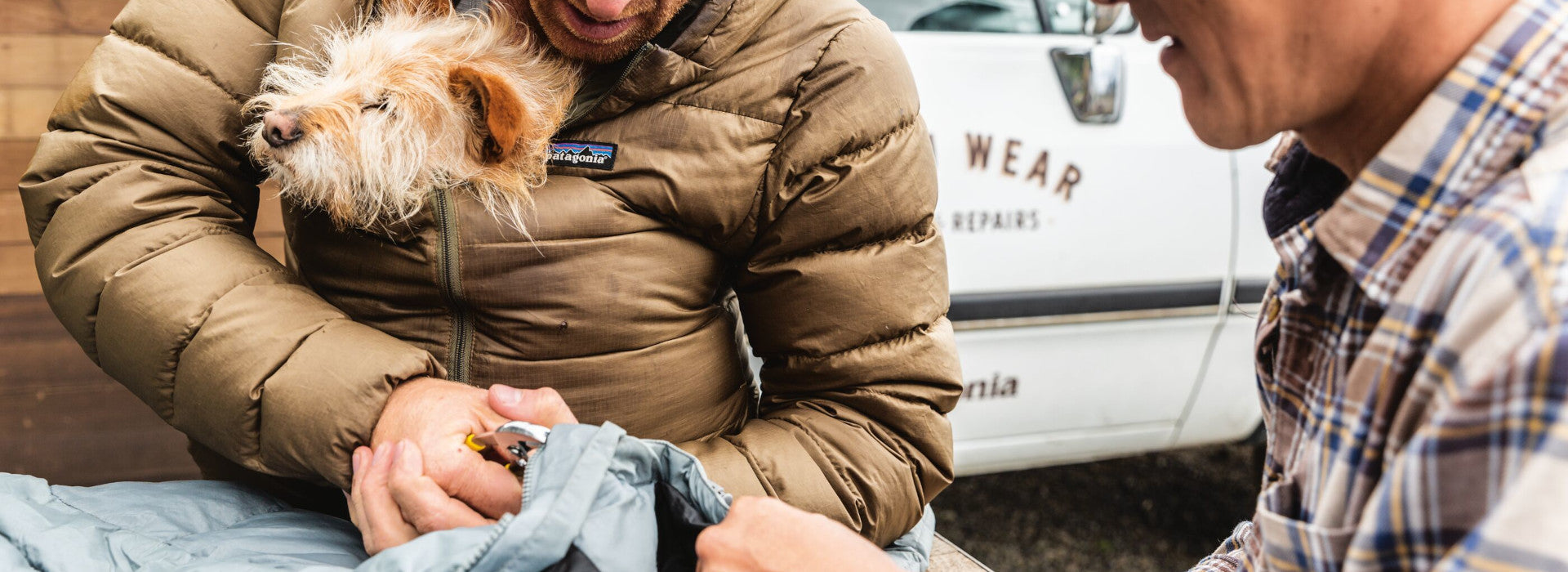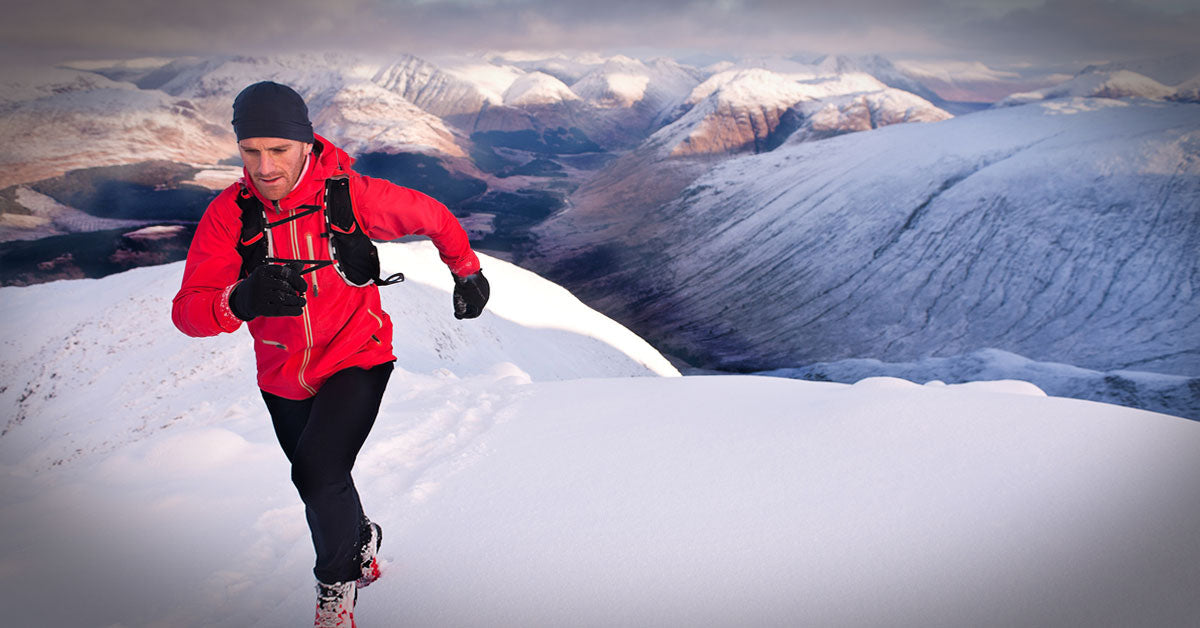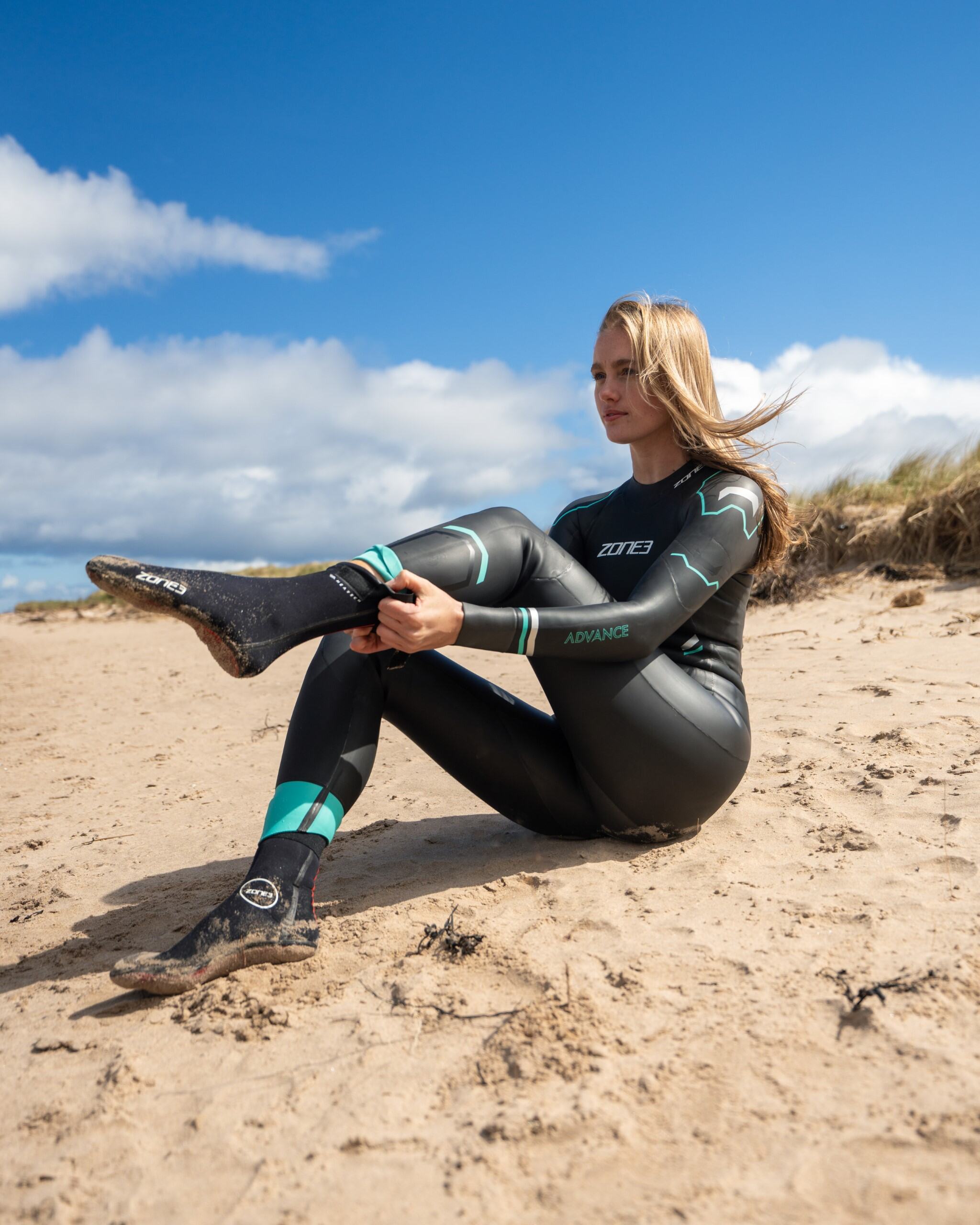
Deciding on a wetsuit to purchase can be a daunting process. With such a wide range of brands, styles and prices on offer, you can easily feel overwhelmed when trying to find the right match for your needs. With this in mind, we’ve tried to answer some frequently asked questions to give you a better idea of what to look for and help you narrow down your options.
1) Why Should I Wear a Wetsuit?
In the simplest terms, a wetsuit’s job is to keep you warm in the water. You lose heat up to 25x faster in the water and a wetsuit acts as a second skin, trapping a thin layer of water between the neoprene and your body which becomes an insulating layer. In addition to keeping you warm, however, there are several additional benefits to be gained from wearing a wetsuit that are easy to overlook.
Warmth:
In the UK, average sea temperatures clock in at just 12°C. This means the risk of suffering from cold water shock is significant throughout the year, as is the risk of developing hypothermia if you are in the water for a longer period of time. With this in mind, it is essential that you are kitted out with a wetsuit of an appropriate thickness for the amount of time you plan to spend in the water and for the type of activity you're doing.
Buoyancy:
You might be surprised to hear that wearing a wetsuit actually helps you to float more easily, which can be a huge advantage. Neoprene is naturally buoyant, meaning you sit higher in the water when wearing a wetsuit than you would without. This results in less resistance when swimming, which is particularly helpful for triathletes who are on the lookout for any competitive edge available to cut time off their PB. Certain triathlon wetsuits are even equipped with a special coating to allow you to glide through the water more effectively, which can result in up to 15% less resistance.
Muscle Compression:
Another lesser-known benefit of wearing a wetsuit is that is provides automatic compression to muscles and joints, which can help you push harder and improve your performance over longer periods of time. Think of wearing a wetsuit much like wearing a compression sleeve over your knee when running.
2) What Thickness of Wetsuit Do I Need?
Wetsuits are available in various thicknesses, which are measured in millimetres. As a general rule, the thicker the neoprene, the warmer the wetsuit. The thickness of the neoprene is listed in a wetsuit’s description and can appear as one, two or even three numbers. The first number refers to the neoprene thickness around your core, which is where you require the most insulation. The remaining numbers refer to the thickness on your arms and legs where more flexibility is required and less insulation, meaning a thinner neoprene is beneficial.
The thickness of wetsuit you will require depends largely on two important questions…
- Where do you intend to use your wetsuit?
- What time of year do you plan on using your wetsuit?
Give these questions some thought and when you have a definitive answer to both, check the average water temperature for your chosen location at the time of year you will get the most use out of your suit. It is important to note that everyone has a slightly different tolerance for cold, so when it comes to wetsuit thickness, individual preferences will vary slightly. The handy guide below, however, should give you an idea of what thickness of suit might be best matched to your needs…
3) Does It Matter What Kind of Stitching My Wetsuit Has?
Wetsuits are made up of a series of neoprene panels that are connected using seams of thread. There are 3 different kinds of stitching that you might come across when shopping for a new wetsuit (flatlock, overlock and blind). The stitching plays an important role in defining how watertight a wetsuit is and consequently how warm it feels. Therefore, it’s important to understand the key differences in stitching so you can make an informed choice regarding what kind you should be looking out for.
Wetsuits with Flatlock Stitching:
Flatlock stitching involves laying one panel neoprene over the other in order to stich them together. The seam created is flexible and strong but this process involves creating holes in the fabric, meaning flatlock wetsuits are prone to high water penetration. With this in mind, flatlock stitching is more suited for use in Spring/Summer wetsuits when water temperatures are slightly warmer.
Glued / Blind Stitching (GBS):
Blind stitched seams, also referred to as GBS seams (‘Glued and Blindstitched’), produce the most water-tight wetsuits. For this reason, Wetsuits featuring this kind of stitching are more expensive than their flatlock counterparts and are ideal for use in cold-water temperatures. In the making of a GBS stiched wetsuit, the neoprene segments are glued together and then stitched halfway through the material, meaning the needle never penetrates completely. This means that no holes are produced which keeps the amount of water absorbed to a minimum.
Overlock Stitching:
Overlock is the simplest method of stitching and the least watertight. This means that wetsuits featuring overlock stiching are often less expensive beginner wetsuits only suited to warmer Summer temperatures. To create an overlocked stich, the edges of two neoprene panels are rolled together and then stitched to hold them together. This method reduces the flexibility of the seam and can cause excess material to be left inside the wetsuit which can irritate the skin.
4) Choosing the Right Wetsuit Size
When it comes to wetsuits, the fit is everything. As a rule of thumb, your wetsuit should be tight to your body and feel almost like a second skin. If it is too big any gaps will fill with cold water, which is not only unpleasant but will result in that vital insulating layer being flushed right out.
The majority of wetsuits are sized based on height and chest size. When it comes to women’s wetsuits, however, it is not uncommon to see them sized according to dress size. At Tiso we always include a size guide on the webpage of every wetsuit we sell for your convenience. Remember, if you are in doubt as to the size you require, you can always measure yourself to get your precise dimensions. You can also use the list of handy fitting tips below to help you determine if your wetsuit is the right size for you…
Fitting Tips:
- Before making any kind of judgement, ensure that your wetsuit is pulled up correctly by checking the positioning of the knees, shoulders etc. Some wetsuits are equipped with knee / elbow pads which you can use for reference.
- Don’t panic if your new wetsuit it feels a little snug when you first try it on. Neoprene loosens as it gets wet, so when you enter the water, the wetsuit will adapt and should feel more comfortable.
- Make sure the torso fits correctly by pinching the neoprene at your lower back. If there is a lot of excess fabric then it is likely too big.
- Check if it feels like your suit is pulling down on your neck or shoulders or if it is restricting your arm movement. If this is the case, then it is likely too small.
- Don’t worry if you feel a little restricted around the neck as this is common in a close-fitting suit. Thankfully, many wetsuits come with anti-rub necklines and cuffs to combat chaffing.
5) What Should I Wear Under My Wetsuit?
There is no right or wrong answer here as what you wear under your wetsuit is all to do with personal preference. We would recommend you wear at least a swimsuit, however, as this is practical if you know you will be changing in a public area. Furthermore, wetsuits can potentially chafe, so some kind of undergarment is likely to make your wetsuit that little bit more comfortable.
6) Best Wetsuits for Swimming
If your primary activity is swimming, then we recommend you go for a swimming specific wetsuit. Swimming wetsuits have been specially designed with greater flexibility around the shoulders and are soft on the neck to help reduce chafing and allow you to turn your head more easily. They are also buoyant in the right places to optimise your body position in the water and maximise your speed, which is particularly important if you are interested in taking part in triathlons or racing.
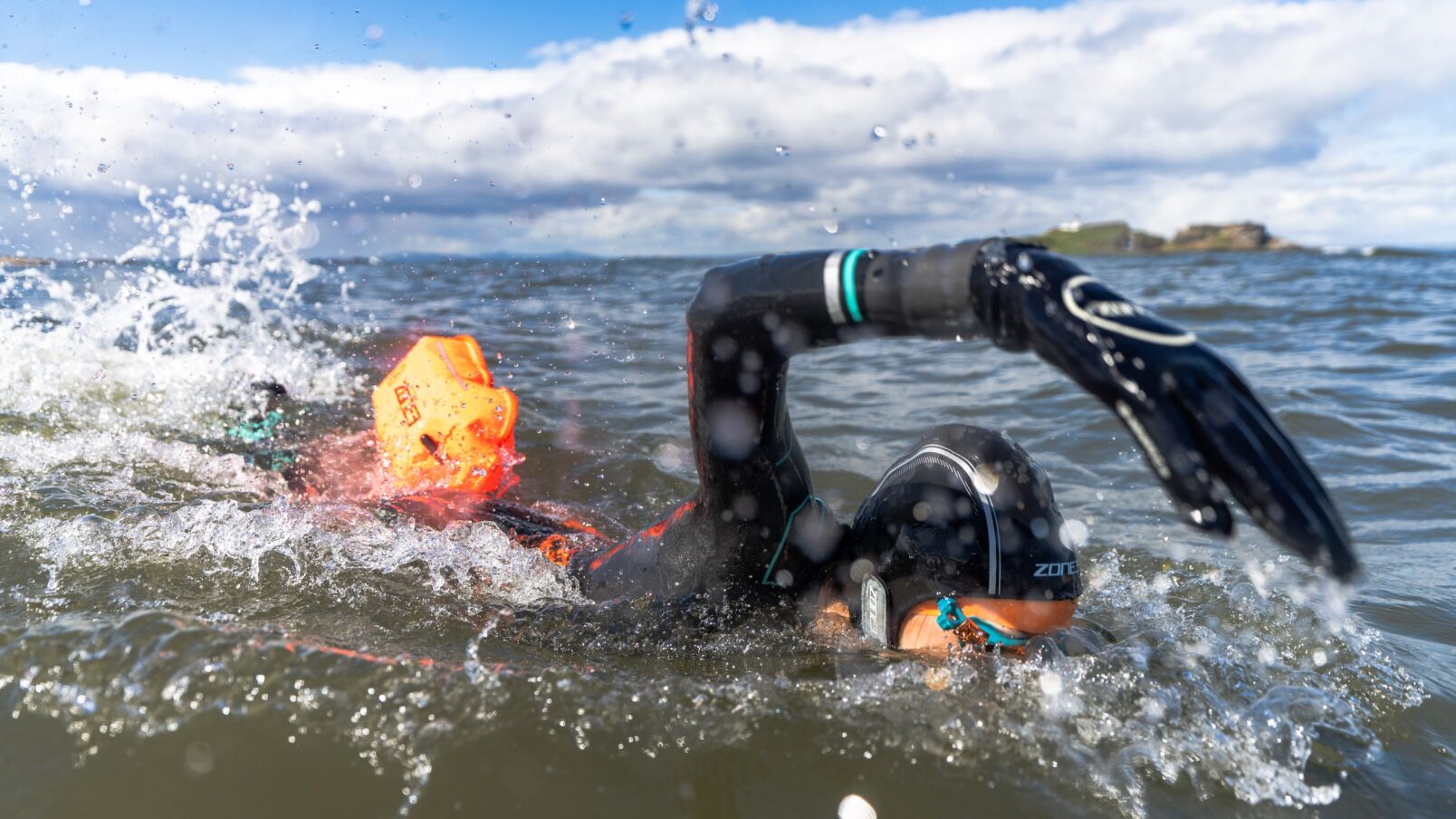
Top Tip: When trying on a swimming-specific wetsuit, be extra careful as the neoprene is particularly fragile and can rip if handled incorrectly.
7) Which Wetsuit Accessories Do I Need?
If you plan on braving icy waters, you probably should seriously consider investing in some of the following wetsuit accessories...
- Wetsuit Boots
- Wetsuit Gloves
- A Rash Vest
Personal preference will come into play when it comes to which wetsuit accessories you will require. For example, during a typical UK Summer the majority of people most likely won’t feel the need to wear wetsuit boots, but if you are particularly prone to cold feet, or just want to protect your toes from those pesky weaver fish then you might want to consider it. Remember, just like a standard wetsuit, neoprene boots and gloves come in a variety of thicknesses and the thicker the neoprene the warmer your feet will feel.
Wetsuit Boots:
How should wetsuit boots fit?
Wetsuit boots come in the standard size ranges (5, 6, 7 etc) but sizes do vary slightly from manufacturer to manufacturer, so you should think about trying on a few different brands to find the right fit. When determining if a pair of wetsuit boots are the correct size, the first thing to consider is that any pocket of air within the boot will fill with water which will slosh around and weigh you down. With this in mind, you should be looking for a snug fit, but not so tight that you experience any discomfort.
How should I put on wetsuit boots?
When preparing to use your wetsuit boots for the first time, make sure you peel up the leg of your wetsuit, put your boots on and then roll down the leg again over the top. This will make sure that your boots won’t be flushed full of water, balloon in size and get ripped off your feet.
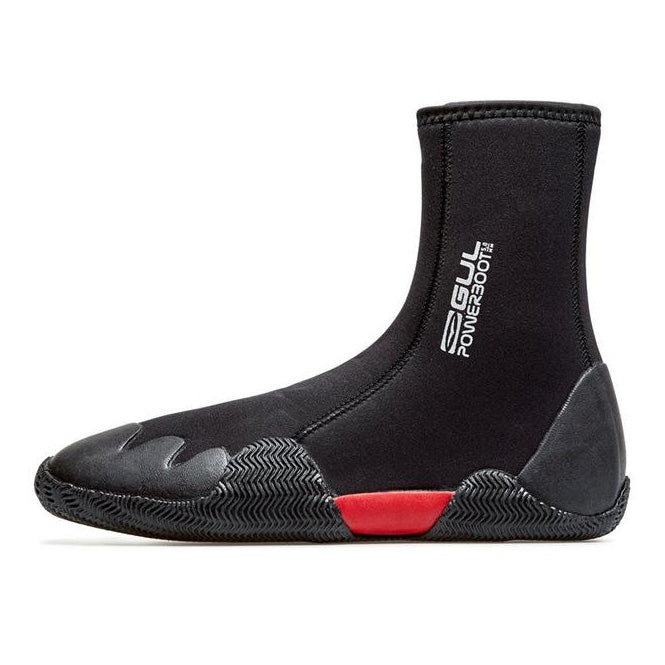
Check out the GUL Powerboots (5mm) if you're after a versatile watersports boot that is super warm and flexible!
Wetsuit Gloves:
Most water sports require you to maintaining he ability to grip with your hands so developing stiff, cold fingers when you’re out on the water is a bummer. That means for most people, a well fitted pair of neoprene gloves is a must-have piece of kit for those colder winter months. Wetsuit gloves are available in a variety of thicknesses, most commonly 2mm, 3mm and 5mm. In the majority of cases 3mm gloves are suitable and should provide a good balance of warmth and flexibility. If you find yourself confronting water temperatures of under 15 degrees centigrade, however, then 5mm gloves might be for keeping your hands warm.
How should wetsuit gloves fit?
You should always check the measurement guide when buying wetsuit gloves to help you find the right size. When trying on your new gloves for the first time, it’s important to remember that they shouldn’t fit like traditional gloves and that the fit will be snugger than what you are used to. Neoprene expands slightly when wet and whilst you don’t want gloves so tight that they are uncomfortable, it’s important that they aren’t too loose or they will fill with water which stops them from keeping your hands warm and toasty.
How should I put on wetsuit gloves?
Much like wetsuit boots, when putting on your gloves you should start by peeling up the sleeve of your wetsuit by 3 or 4 inches. Then you can pull on your gloves and roll down your sleeves to cover the wrist cuff of your glove. This should help prevent excess water from entering.
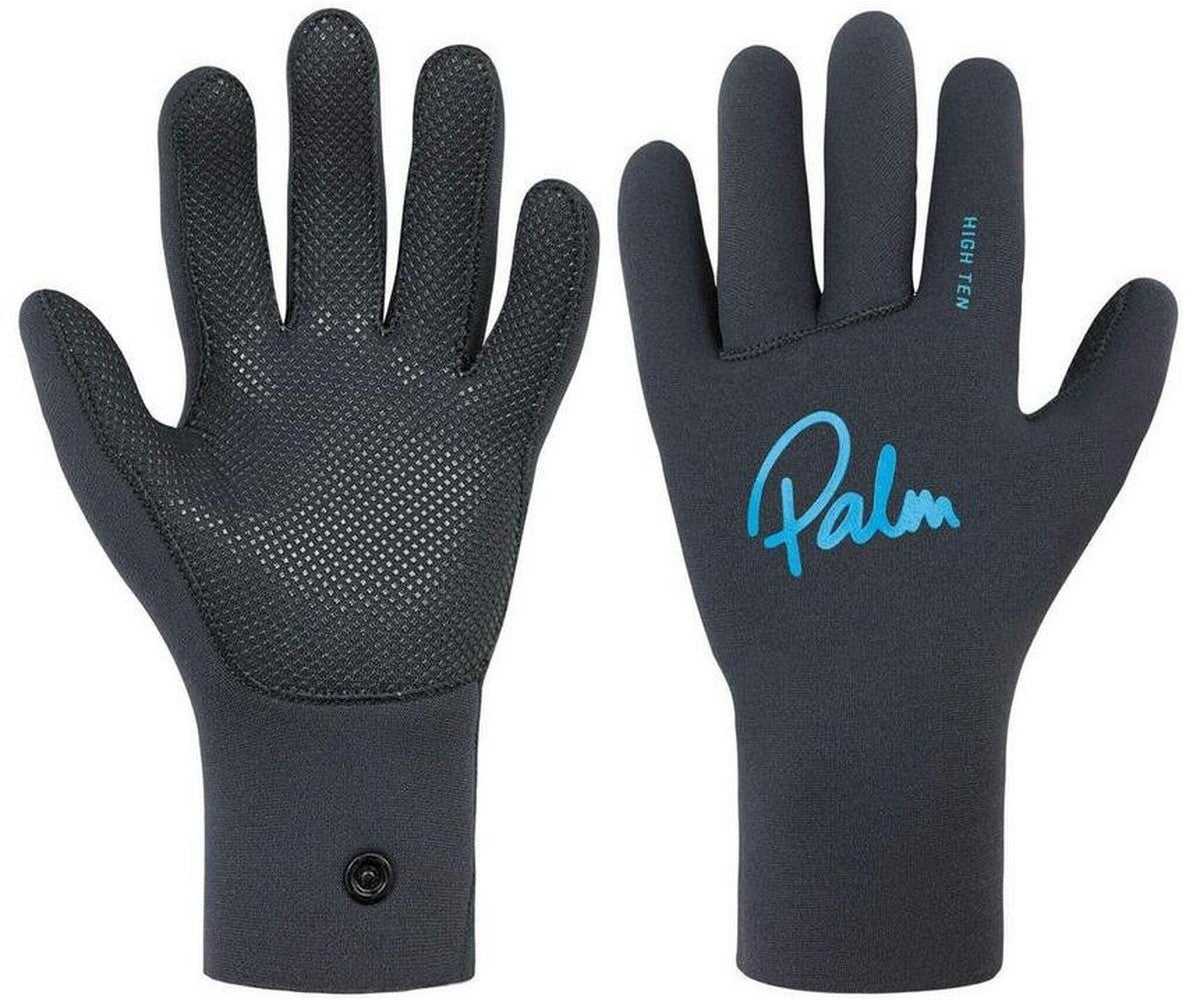
The Palm High Ten Gloves are a great option if you are looking for a multisport glove to help keep your digits warm on those colder days!
A Rash Vest:
A rash vest is a close-fitting top crafted from quick-drying synthetic material, making it durable, quick drying and stretchy enough to allow for optimum freedom of movement in the water. Many watersports enthusiasts choose to wear a rash vest under their wetsuit to provide an added layer of protection against friction and additional warmth in cold water. On a warm day, however, a wetsuit may not be required and you may choose to wear a rash vest over your ordinary swimwear to protect yourself against those harmful UV rays and prevent any abrasions to the skin from sand or hard surfaces.
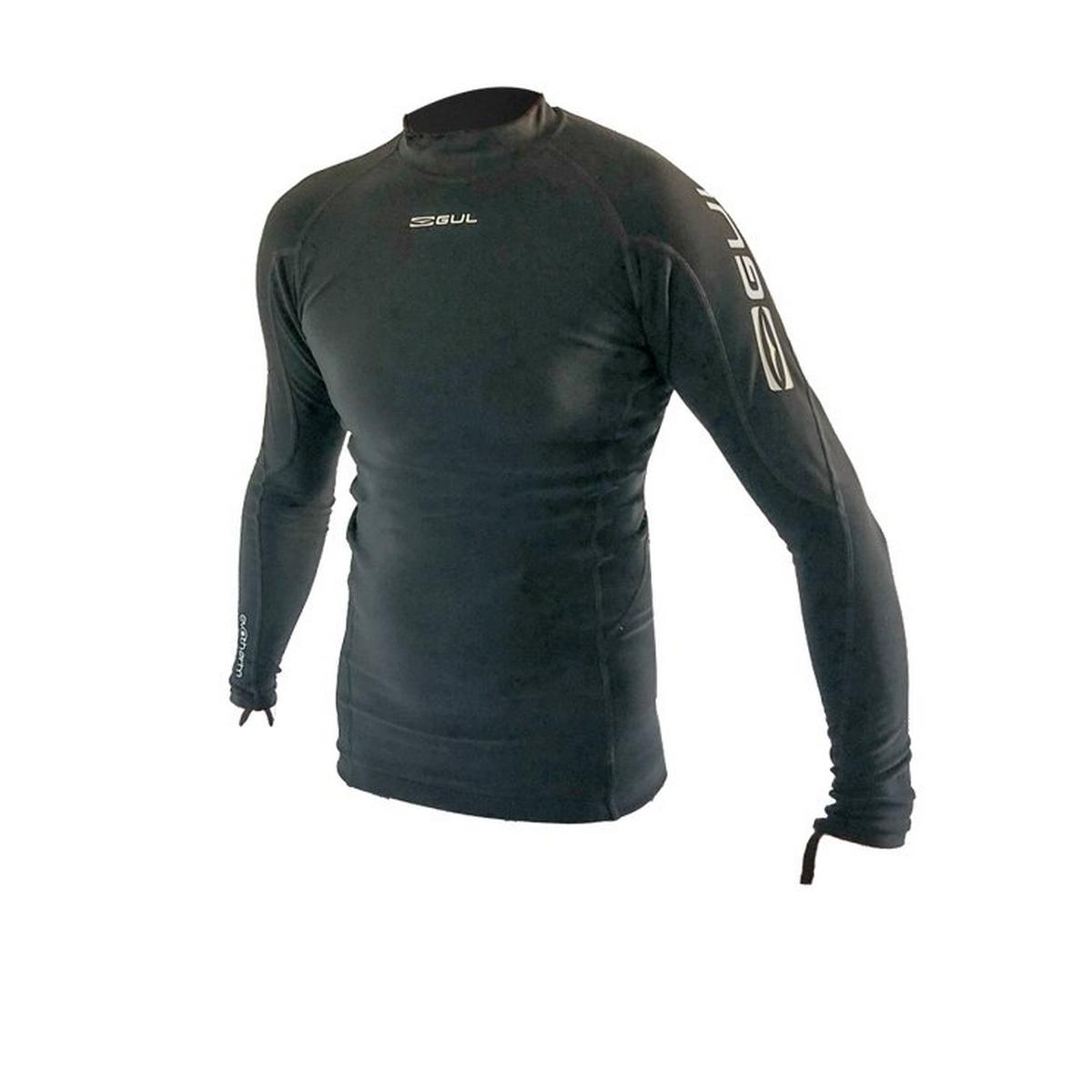
The Gul Evotherm Long-Sleeve Rash Vest is a great option for providing maximum protection from wetsuit rubbing, rashes and sun rays.
8) How Do I Look After My Wetsuit?
Your wetsuit looks after you in the water, so please return the favour when you take it off. Follow the simple steps below to take good care of your new suit and extend its life significantly. The bonus is that this will save you money down the road.
1) Rinse your wetsuit with clean, cold/lukewarm water:
The sooner you can rinse out your wetsuit the better. This is particularly important if your wetsuit has been used in salt water as salt can dry out the neoprene, causing a reduction in elasticity and corrosion of the seams.
2) Don’t put your wetsuit in the washer / tumble drier:
Whilst a wetsuit might survive a cold wash with a slow RPM it still isn’t recommended, a quick rinse with a hose or in the shower is more than sufficient. Furthermore, putting it in a tumble dryer is an absolute no as this is a sure-fire way to destroy your new suit and void its warranty.
3) Leave your wetsuit to dry inside out / out of direct sunlight:
One of the easiest ways to dry out your wetsuit is to put it through a large coat hanger or over a washing line by the waist, as this prevents it from stretching. If you hang your wetsuit up outside, remember to keep it out of the sun as UV light is detrimental to wetsuit health, drying out the neoprene and aging it prematurely.
4) Make sure your wetsuit is completely dry before storing it:
Putting your wetsuit into storage when it is still moist can encourage the growth of mould, plus it probably won’t smell too pleasant the next time you get it out either.
5) Store it somewhere cool and dry:
If you can, it’s a good idea to store your wetsuit on a wetsuit hanger in your wardrobe. Alternatively, you could consider using a regular broad shoulder hanger or simply roll it up from the bottom for storage. We recommend that you avoid folding or stuffing your wetsuit into small spaces wherever possible as this can result in creases and even cause damage.
